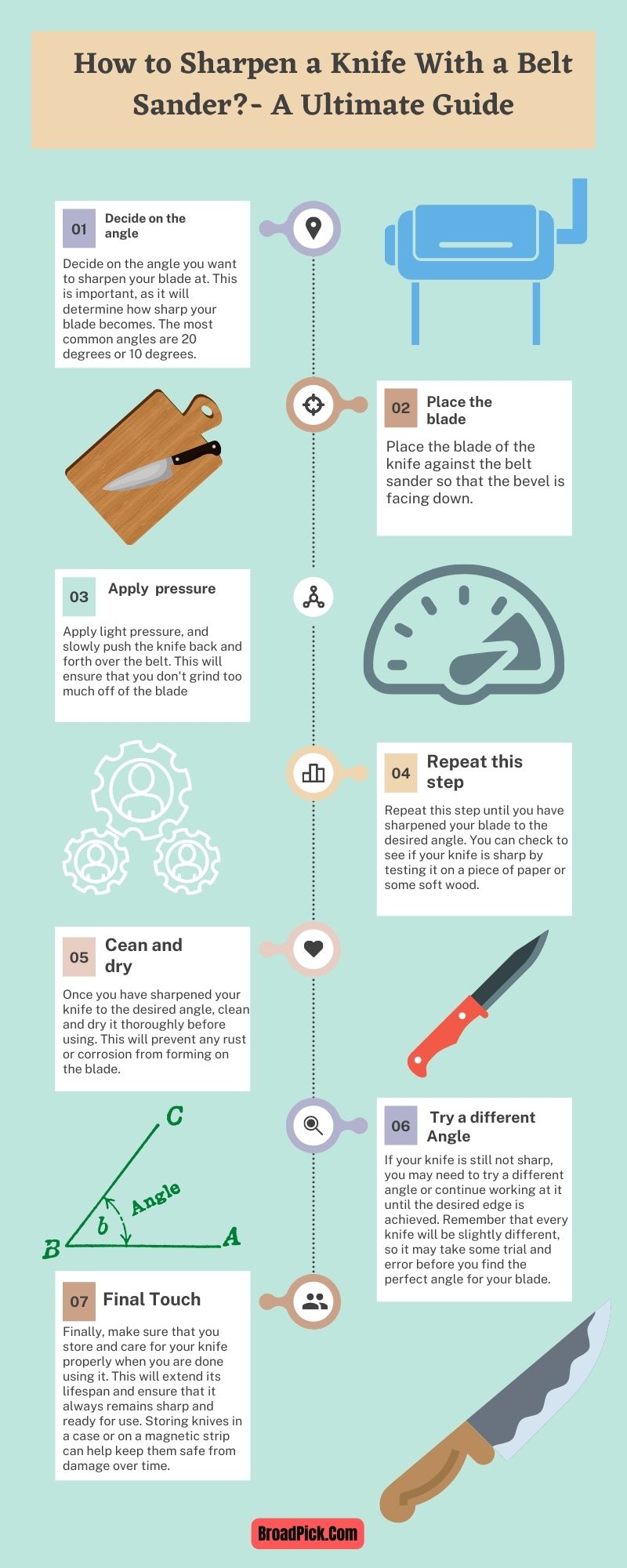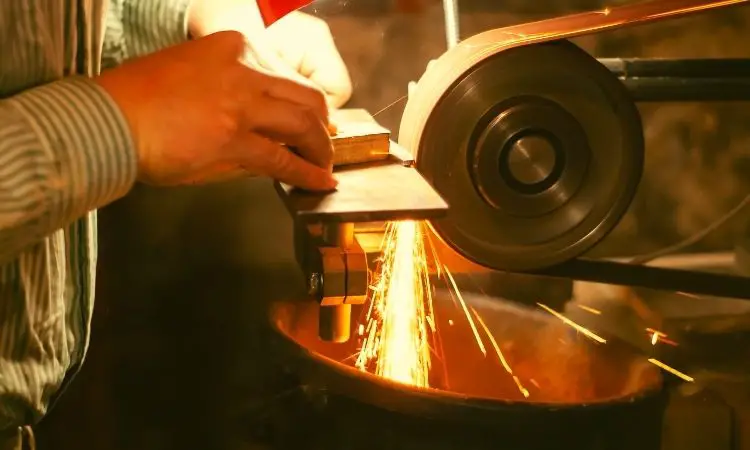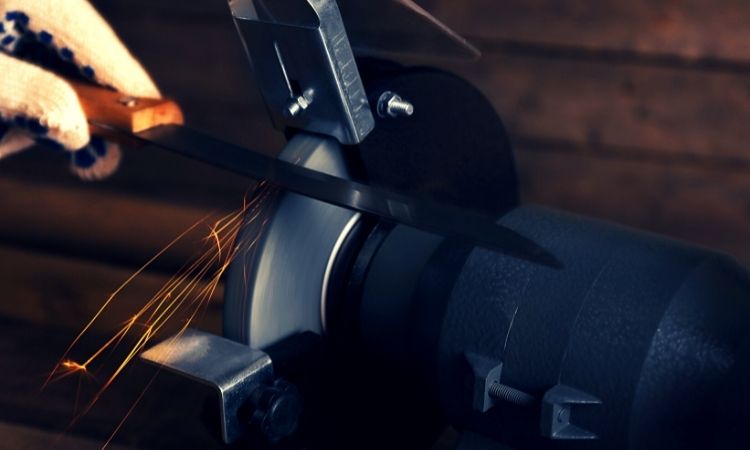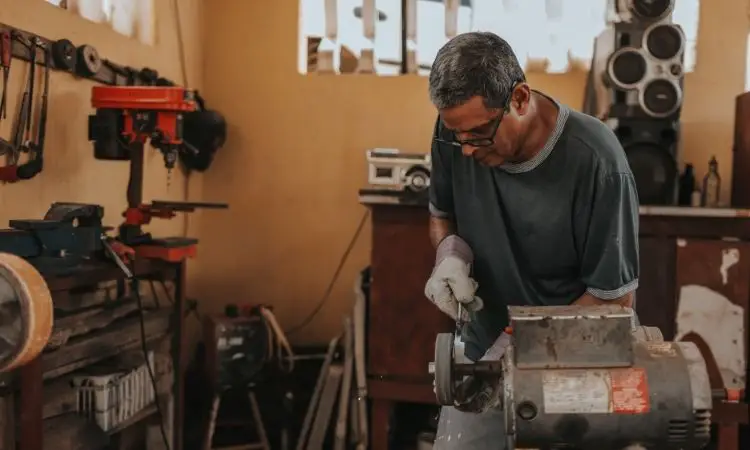Sharpening a knife is a daily task for some people while others only do it when their knives become dull. There are different ways of sharpening a knife like using a honing rod, electric knife sharpener, or even a belt sander. Each method has its own advantages and disadvantages. In this article, we will be discussing how to sharpen a knife with a belt sander.
How Often Should You Sanding Your Knife?
It really depends on how often you use your knife. If you are a professional chef who uses their knife all day, then you will need to sharpen it more often than someone who only uses it for occasional cooking. A good rule of thumb is to sharpen your knife every time it starts to feel dull.
What Are The Procedure of Sharpening a Knife With a Belt Sander?
Belt sanders are powerful tools that can quickly sharpen a dull blade. However, they can also damage the blade if not used properly. Follow these steps to safely sharpen your knife with a belt sander:
First Pick the Perfect Belt Sander:
Belt sanders are available in different sizes, and it is important to match the size of your knife with the belt sander. The most common size used for sharpening a blade is 3 x 21 inches. If you have any other size, then your belt sander might struggle to sharpen the blade. But obviously, if you're using the wrong size belt sander, you risk dulling your knife. You should always use branded belts, as the generic ones are not of good quality.
Prepare Your Workstation:
Make sure that you have everything ready on your workstation when you start sharpening your knife. You will need a bench grinder, safety goggles, disposable gloves, sandpaper blocks of different grits (60/80/100), and, tape.
Now, Sharpen One Side of the Blade First:
Start by sharpening one side of the blade first. Hold the blade at a 20-degree angle to the belt sander and move it from left to right. Apply moderate pressure to avoid damaging the blade. Continue moving the blade until you have a sharp edge.
After That, Repeat the Same Steps on the Other Side:
Once you have sharpened one side of the blade, repeat the same steps on the other side. Remember to hold the blade at a 20-degree angle and move it from left to right. Apply moderate pressure to avoid damaging the blade.
Grind the Edge and Remove Burrs:
Make sure that your gloves are on before starting to work with the grinder. Set the speed setting to around 1/2 and start grinding the edge of your knife. Start by using coarse paper (60 grit) and make long, slow passes along the length of the blade while keeping it at a 20-degree angle. Remove any burrs from the knife by using the finer grades of paper (80/100 grit).
Secure Your Knife:
The easiest way to secure your knife is by locking it in a vise or clamping it in place. This will prevent any unwanted movements that might damage the blade while being sharpened.
Use the Right Technique:
There are different ways of using a belt sander, but the most important thing is to use the right technique. The wrong technique can damage your knife or even cause injuries. Here are some tips for using a belt sander safely:
- Use both hands to hold the blade while moving it from side to side.
- Keep the blade constant degree angle to the belt sander.
- Apply moderate pressure to avoid damaging the blade.
- Move the blade slowly to get a uniform edge.
Stop Sanding When You're Done:
Once you have achieved the desired sharpness, stop sanding and turn off the belt sander. Sharpen the blade a few more times if needed, and then repeat these steps on the other side of the blade.
Conclude and Test:
Once you finish with the grinder, check for any leftover burrs on your blade. If there are still some left, then repeat step 3 and 4 until all of the burrs are removed. Once you have finished all the grinding, test your knife to see if it is sharp. If not, then repeat step 3 and 4 once more.
It is also important that you always lubricate your sandpaper in order to prevent overheating of the blade. You can use vegetable oils or cooking oil for this purpose.
Hopefully, by following these steps and using the right techniques for sharpening your knife with a belt sander, you will be able to get sharp knives without ruining them.
Note: "Always remember to take your time when working with power tools and always use safety equipment."

What Are The Advantages Of Using A Belt Sander?
There are several advantages of using a belt sander to sharpen your knife.
- It is very fast and easy to use.
- You can get a very sharp edge with a belt sander.
- It is great for people who don't have a lot of experience sharpening knives.
What Are The Disadvantages Of Using A Belt Sander?
There are a few disadvantages of using a belt sander to sharpen your knife.
- It can be difficult to control the pressure and angle of the blade when sharpening, which can lead to damage or injury if you are not careful.
- It is also prone to overheating your blade, which can cause it to become brittle and break more easily over time.
Is There Anything Else I Should Know About Using A Belt Sander?
Yes, there are a few things you should know before using a belt sander to sharpen your knife.
- Always wear gloves and safety glasses when working with power tools.
- Never leave the machine running unattended.
- Make sure the area you are working in is well ventilated to avoid inhaling harmful dust particles.
- Always keep your blades clean and lubricated to prevent overheating.
- Use a lower speed setting when starting out, and increase the speed gradually as you get more comfortable with the machine.
- Stop sanding when you reach the desired level of sharpness, and repeat on the other side of the blade.
- Test your knife on a piece of paper or fabric to check for sharpness before using it.
Is A Belt Sander The Only Way To Sharpen My Knife?
No, there are other ways to sharpen your knife. You can use a sharpening stone, honing rod, or even a simple piece of sandpaper. However, belt sanders are the fastest and easiest way to get a sharp edge on your knife. And yes, if you are a beginners user who want to always have a sharp knife, we recommend you to use a belt sander.
Is Brand Of Belt Sander Important?
No, the brand of belt sander is not important. Any belt sander will work for sharpening your knife. However, we recommend you to use a higher quality belt sander for best results. Common brands include Black & Decker, Ryobi, Makita, and Dewalt. When looking for a belt sander, make sure to choose one that has a sturdy construction and features such as variable speed settings and integrated guards to protect your hands from the grinding surface.
Conclusion:
Nothing is more frustrating than a dull knife. But with a little patience and the right tools, you can easily sharpen your knives at home without spending a lot of money. Using a belt sander is one of the quickest and easiest ways to get a sharp edge on your knives. Just remember to take your time, use the proper safety equipment, and keep your blades well-lubricated to avoid overheating. With these tips and a little practice, you'll be able to get sharp knives in no time.

I am a graduate of Bangladesh Agricultural University, where I delved into various agricultural disciplines, equipping me with a profound understanding of agriculture. Beyond academics, I have hands-on experience in gardening and crop cultivation. My passion is to embrace sustainable farming and horticulture. With a BSc in Agriculture, I am dedicated to promoting environmentally conscious and efficient agrarian practices.
Bachelor of Science (BSc) in Agriculture (Hons.)
Master of Science. (Sustainable Agriculture & Food Security ) (MS)
Bangladesh Agricultural University



![Best Knife Grinder for Beginners and Buyer Guide in 2022 [Top Pick] Best-Knife-Grinder-For-Beginners](https://broadpick.com/wp-content/uploads/2021/09/Best-Knife-Grinder-For-Beginners-1.jpg)
